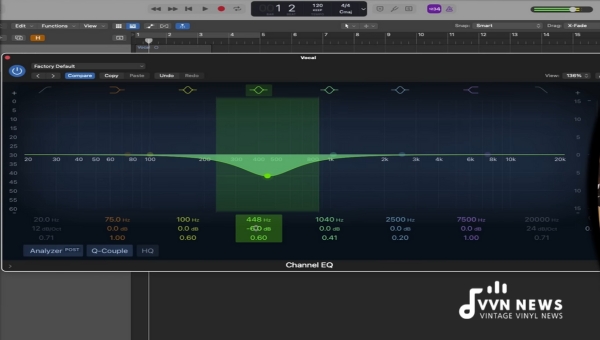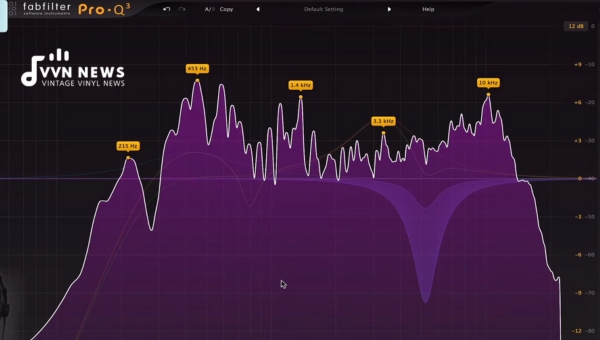In the age when we stream music as effortlessly as breathing, it becomes important to put into perspective a piece of legislation that changed the way streaming platforms reimburse creatives.
I am speaking about “The Music Modernization Act- to Pay fair streaming royalties.” This groundbreaking law transformed digital music rights in America and how they interact with the world.
With the convenience of modern technology, I can access millions of songs from around the globe in just a few clicks.
But have you ever paused to consider who gets paid when playing your favorite track?
The Music Modernization Act plays a key role in answering this question. Instituted in 2018, it’s one vital piece of legislation that you may not have heard about but one that significantly impacts your listening experience every day.
What is the Music Modernization Act?
The Music Modernization Act (MMA), signed into U.S. law in 2018, is a game-changer for music creators and copyright holders alike. Let’s break down its multifaceted aspects.
- Mechanical Licensing Collective:
An important piece of the MMA puzzle, it establishes a single mechanical licensing database for digital music providers to identify copyright owners and distribute royalties accordingly. - Songwriter’s Compensation:
Before MMA, rate court judges were not considering market rates in determining songwriter’s royalty rates, with rates often falling below fair value. MMA now demands the consideration of free market conditions when setting rates. - Pre-1972 Recordings:
Previously unprotected by federal law, MMA extends copyright protection to songs recorded before February 15th, 1972. - Allocation for Music Producers Act:
This provision allows for fair compensation of producers and engineers when their music is used on satellite and online radio platforms.
The MMA has made significant strides towards modernizing copyright laws about digital streaming services in an increasingly digital age.
It can be seen as a much-needed boon for songwriters, artists, and producers.
Current problems with streaming royalties for artists

Streaming has shifted the music landscape in both phenomenal and detrimental ways.
While it offers considerable conveniences to listeners, the problem is that these benefits are not trickling down to the artists who provide us with the music we so effortlessly enjoy.
Also Read: What Is A Session Musician? [Skills, Qualities, & Earnings]
Unreliable Payment Rates
One significant issue many creatives face is the unpredictability and inconsistency in royalty payments from different streaming platforms. The rates paid per stream differ vastly among different platforms, and there’s no universal standard.
Lack of Transparency
Transparency remains a major concern for artists regarding how their pay is calculated. The streaming royalties equation often baffles artists due to its complexity and lack of clarity. It’s difficult to ascertain what percentage of what an artist earns per stream goes where.
Inadequate Compensation
Perhaps the largest grievance held by those in the creative industry, this issue concerns how small payments for streams are compared to traditional purchases. For example, an artist typically earns around $0.006 – $0.008 per stream on Spotify compared to a substantial cut when selling a physical album or track on iTunes.
All of these issues culminate in musicians finding it tremendously challenging to make ends meet financially from streaming earnings alone, especially independent musicians without backing from a record label.
The MMA aims to level this uneven playing field by establishing standards for fair payment and improving transparency in royalty calculations for all stakeholders involved.
Even though it has made some markable changes since being enacted, only time will tell if these issues pop up again in this ever-evolving digital landscape we live in.”
Understanding the Old Model of Streaming Royalties Distribution
Before delving into the old model of streaming royalties distribution, let’s understand streaming royalties first.
They are the payments made to copyright holders whenever their work is streamed on digital platforms.
This involves two primary rights – mechanical rights (where songwriters and publishers get paid through mechanical royalties) and performance rights (where performers receive payment via performance royalties).
Proportionate Payout System
In the past, streaming services like Spotify and Apple Music employed a “proportionate payout system” to distribute royalties. Here’s how it worked:
- Each streaming service would pool together all of its subscription fees for a given period.
- The total number of streams for that same period was counted.
- Each song’s proportion of those total streams determined its share of the total payout.
Thus, if one song contributes 1% to all streams in a month, it gets 1% of that month’s earnings.
Per-stream Rates vs. Market Share Calculation
However, there was an ongoing debate about per-stream rates – that is, the amount paid per individual play – versus market share calculations – which refers to each song or artist’s slice of the total music pie streamed on a platform.
A key issue was these platforms were negotiating with sizable record labels rather than individual artists, leading bigger artists to essentially earning more per stream due to contractual agreements.
Royalties from Ad-Supported Streaming
Another gray area was ad-supported free tiers offered by some platforms. Ad revenues generated by these free tiers were distributed differently than subscription fees: they were often significantly less and not directly related to a user’s listening habits.
Moreover, detailed royalty reports or analyses were rarely if ever shared with artists allowing negligible transparency in these processes.
Limitations
The flaws with this model became apparent over time. From obscure transparency to disproportionate allocation favoring popular music over niche genres – issues persisted leading us to rethink approaches towards royalty distribution.
Our journey through understanding has led us to realize that achieving balance between rewarding creative quotas and maintaining profitability in this digital music space was challenging yet crucially needed – hence paving way for The Music Modernization Act.
Also Read: What Is Audio Clipping? [Digital Clipping Vs Analog Clipping]
Evolving Rules with the Music Modernization Act

Prior to the implementation of MMA, streaming royalties’ distribution was excessively complex due to outdated copyright laws and licensing systems.
Essentially, the old model leaned heavily in favor of digital music services rather than songwriters, artists, and producers.
Unmatched Royalties
Under older rules, streaming platforms had to locate songwriters or rights owners before paying out royalties – a cumbersome task given the vast number of songs on their platforms.
As a result, a significant amount of money labeled as “unmatched royalties” sat in escrow accounts.
With MMA now in effect, digital music providers are required to turn over these unmatched and unclaimed royalties to a newly created body known as the Mechanical Licensing Collective.
This non-profit entity is responsible for matching these royalties to their rightful owners.
Fair Rate Standards
The previously used 801(b) standard set songwriter royalty rates by courts without considering market rates.
The new “willing buyer, willing seller” standard introduced by MMA has altered this process.
This fair market rate standard considers what a willing buyer would pay a willing seller in a free market transaction when setting royalty rates for mechanical licenses.
In doing so, it aims at ensuring fair compensation for music creators in an ever-evolving industry.
Pre-1972 Recordings
Before MMA’s inception, there were no federal copyright protections for musical works recorded before February 15th, 1972.
With this legislation’s advent and the “CLASSICS Act” portion of it woven into its framework, these recordings now enjoy federal copyright protection, an impactful change that brings equity amongst older and younger artists in terms of royalty payments.
Sound Recording Producers
Introducing the Allocation for Music Producers Act as part of MMA, the music industry’s unsung heroes, such as producers and engineers, are now entitled to royalty payouts. This ensures that these crucial parts of the music-creating process receive their fair share when their heavy-liftings on records are streamed on satellite and digitally.
Protected Database
The newly created Mechanical Licensing Collective will also manage a comprehensive and publicly accessible database containing vital information on mechanical rights. This is fundamental in establishing transparency in royalty distributions.
The Music Modernization Act represents a significant step forward in harmonizing the rules that govern streaming royalties.
By focusing on fair distribution of royalties, recognizing the work of all involved in music production, and creating a structure that supports transparency. It sets a precedent for how digital music can enrich artists – not just streaming services.
While it might seem like complicated legal jargon to some or unnecessary paperwork to others, as users we must remember at the other end of our headphones are artists who put their heart and soul into brightening our days with their tunes.
Recognizing this effort with fair remuneration is the least we can ensure they receive.
Also Read: What Is Reverb? [An In-Depth Guide For Audio Enthusiasts]
FAQs About the Music Modernization Act
Who wrote the Music Modernization Act?
Hatch-Bob Goodlatte wrote the Music Modernization Act.
What is the Music Modernization Act Spotify?
Spotify, a music streaming service, supported the Music Modernization Act which modernizes copyright-related issues for new music and audio recordings due to new forms of technology like digital streaming.
When was Music Modernization Act passed?
The Music Modernization Act was passed by the United States Congress on October 11, 2018.
Why was the Music Modernization Act created?
The act was created to update laws regarding music licensing and royalty payments to accommodate newer technology such as audio and video streaming services.
Who benefits from the Music Modernization Act?
The key beneficiaries of the Music Modernization Act are songwriters, artists, producers and music platforms who get streamlined licensing clearance process and fair royalty rates.
Conclusion
The Music Modernization Act stands as one shining example of the music industry’s pursuit of fairness and relevance in the digital age. It may not be perfect, with critics arguing it could do more.
It represents monumental progress in ensuring that our favorite artists, songwriters, and producers receive their due for the magic they weave into our lives through music.
With this Act, we’ve turned a significant corner towards aligning royalties with the digital age of streaming – ensuring the continued vibrancy and creativity of music for generations to come.








